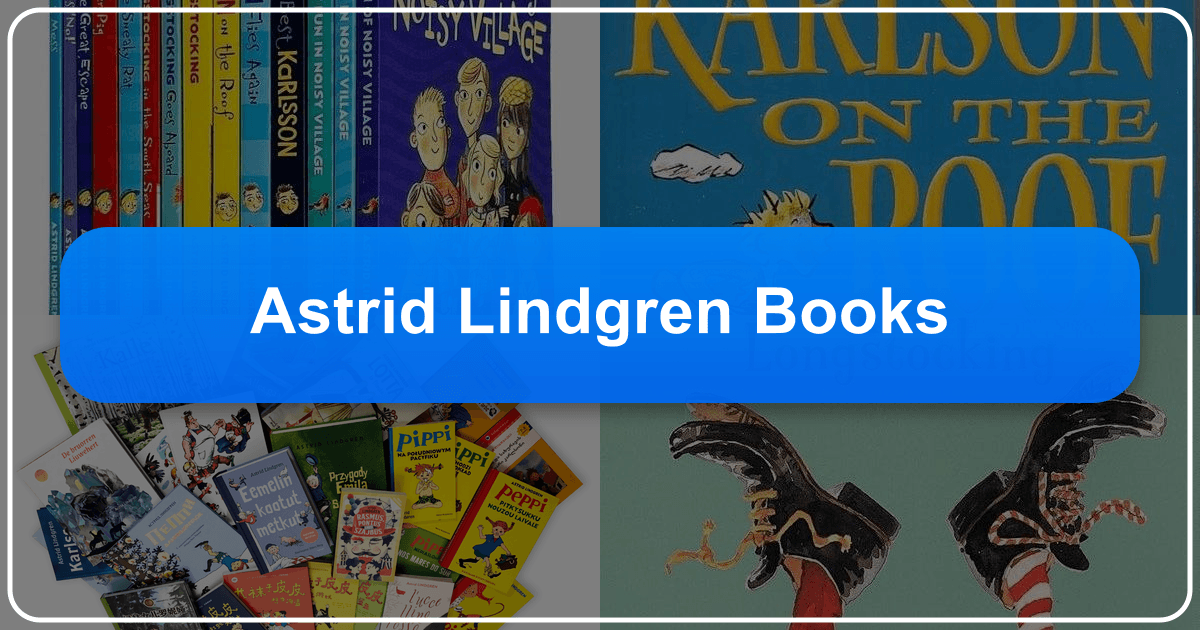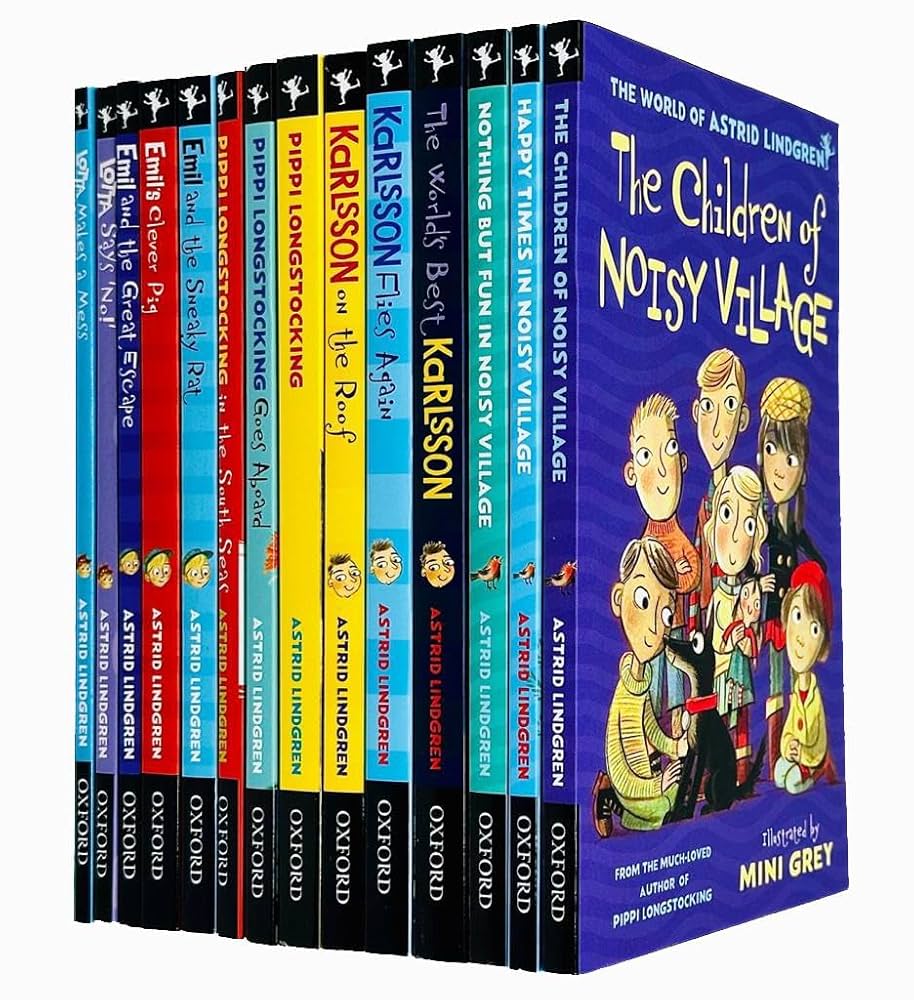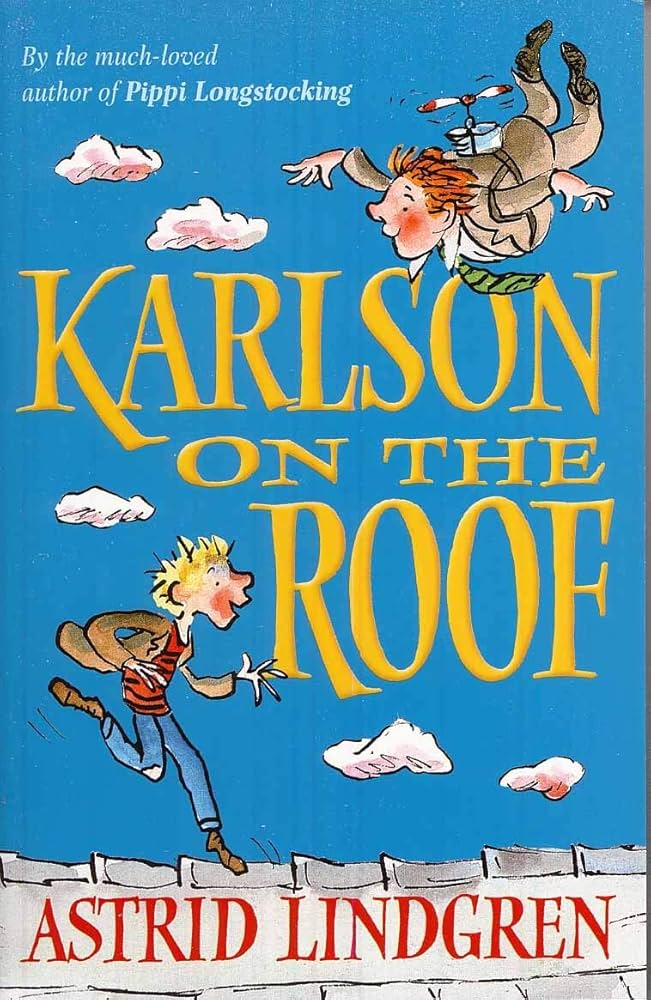Astrid Lindgren Books: A Comprehensive Guide

Astrid Lindgren, a Swedish author, is renowned for her captivating children’s literature. Her iconic characters, like Pippi Longstocking, Emil of Lönneberga, and the children of Noisy Village, have enchanted generations of readers worldwide. This article delves into the world of Astrid Lindgren’s books, exploring various aspects, from genre classifications and literary impact to educational value and cultural adaptations.
1. Exploring the Genres and Collections of Astrid Lindgren’s Books

Astrid Lindgren’s literary works span several genres, primarily focusing on children’s and young adult fiction. Her stories often blend elements of fantasy, realism, adventure, and humor, creating a unique and engaging reading experience for young audiences. While individual books showcase specific genres, collections often offer a mix, catering to a broad range of interests and reading levels.
1.1 Genre Classification: A Diverse Literary Landscape
Lindgren’s books aren’t easily confined to single genres. Her most famous work, Pippi Longstocking, incorporates elements of fantasy with Pippi’s superhuman strength and unconventional lifestyle, yet it’s grounded in a realistic depiction of childhood friendships and societal expectations. Similarly, the Emil of Lönneberga series blends humor and mischief with heartwarming portrayals of family life in a rural Swedish setting. The Noisy Village books, on the other hand, provide a charming glimpse into the everyday adventures and camaraderie of a group of children living in a small village. This blend of fantasy, realism, and humor is a hallmark of Lindgren’s writing and contributes to the enduring appeal of her stories.

Some of her works can be classified more specifically. For example, The Brothers Lionheart leans towards fantasy and allegory, exploring themes of death, courage, and the power of imagination. Other books focus on specific aspects of child development, such as Lotta Says No!, which deals with the assertion of independence in young children. This diversity ensures that her works resonate with a wide range of readers and age groups.
1.2 Classics, Bestsellers, and New Releases: An Enduring Legacy
Many of Lindgren’s books are considered classics of children’s literature. Their timeless appeal stems from the relatable characters and universal themes that transcend cultural boundaries and generational differences. Pippi Longstocking, in particular, has achieved global bestseller status, translated into numerous languages and adapted into various media. While new releases may not always be directly authored by Lindgren (as she passed away in 2002), new editions, translations, and anthologies of her existing works continue to be published, ensuring her stories remain accessible to new audiences. Publishers regularly release special editions, collections, and boxed sets, capitalizing on the enduring popularity of Lindgren’s characters.

1.3 Book Reviews: Critical Acclaim and Reader Engagement
Astrid Lindgren’s books have consistently garnered positive critical reviews, praising her imaginative storytelling, witty prose, and insightful portrayal of childhood. Reviews often highlight the enduring appeal of her characters and the universal themes explored in her works. Reader reviews also play a significant role in shaping the perception and popularity of Lindgren’s books. Online platforms like Lbibinders.org and Goodreads provide avenues for readers to share their experiences and opinions, fostering a vibrant community around her work. These reviews offer valuable insights into how Lindgren’s stories resonate with readers across different backgrounds and age groups. The consistently high ratings and positive feedback on various platforms reflect the continued popularity and lasting impact of her writing.
2. Astrid Lindgren: The Author Behind the Masterpieces
Astrid Lindgren’s life and experiences significantly influenced her writing. Understanding her background offers valuable insight into the depth and authenticity of her beloved stories.
2.1 Biography: A Life Reflected in Literature
Astrid Lindgren (1907-2002) was born in Vimmerby, Sweden. Her childhood on a farm in the Småland region provided the inspiration for many of her settings and characters. Her experiences working as a journalist and secretary further shaped her writing style and her understanding of diverse perspectives. Her own personal relationships with her children and grandchildren profoundly influenced the depiction of family dynamics in her books.
2.2 Writing Style: A Unique Narrative Voice
Lindgren’s writing style is characterized by its simplicity, humor, and directness. She engages young readers through conversational language and engaging narratives, making her stories both accessible and captivating. Her storytelling approach often allows her characters to demonstrate strong opinions and values, while simultaneously addressing more serious societal and personal themes in a manner suited to children’s understanding. Her distinctive tone is a crucial part of the overall storytelling; it contributes significantly to the books’ unique atmosphere, making them readily identifiable.
2.3 Inspirations: Real-life influences shaping fictional worlds
Lindgren’s works frequently draw inspiration from her own childhood experiences, the natural beauty of the Småland countryside, and the people she encountered throughout her life. Her observations of children’s behavior, their perspectives, and their interactions with the world around them shaped the authenticity and relatability of her characters and storylines. The strong female protagonists, such as Pippi Longstocking, have often been interpreted as a reflection of Lindgren’s own independent and strong-willed personality.
2.4 Famous Works: Enduring Literary Landmarks
Astrid Lindgren’s most famous works, including the Pippi Longstocking series, Emil of Lönneberga series, and the Noisy Village books, have achieved a canonical status in children’s literature. These works are frequently studied and celebrated for their impact on young readers and their contribution to the literary landscape. The continued popularity of these books reflects their timeless appeal and ability to connect with readers across generations.
3. Reading and Learning: The Educational Value of Lindgren’s Books
Astrid Lindgren’s books offer far more than mere entertainment; they provide valuable opportunities for reading comprehension, personal development, and moral education.
3.1 Summaries: A Glimpse into Lindgren’s Stories
Summaries of Lindgren’s books provide concise overviews of their plots and characters. These summaries can be useful for introducing readers to her works or for refreshing one’s memory of a particular story. For instance, a summary of Pippi Longstocking might cover Pippi’s unique personality, her adventures with Tommy and Annika, and her rejection of conventional societal norms. Likewise, summaries of the Emil of Lönneberga series would focus on Emil’s mischievous antics and his relationship with his family and community. These concise summaries facilitate the identification of potential books of interest and serve as a launching point for a deeper exploration of Lindgren’s narratives.
3.2 Educational Value: Developing essential skills
Lindgren’s books contribute significantly to a child’s reading comprehension and vocabulary development. The clear and engaging narrative style facilitates improved literacy skills and fosters a love of reading. The rich and varied vocabulary helps expand the reader’s linguistic capabilities. Moreover, the descriptive settings and characters aid in developing critical thinking and imaginative skills.
3.3 Life Lessons: Moral and ethical development
Astrid Lindgren’s stories often explore important life lessons related to friendship, resilience, kindness, and social responsibility. Pippi’s independence and self-reliance, Emil’s capacity for admitting mistakes, and the cooperation and mutual support within the Noisy Village community are just a few examples. These relatable characters and storylines contribute significantly to the development of a child’s moral and ethical understanding. Lindgren’s work often tackles more complex themes, such as prejudice, poverty, and death, in age-appropriate ways, prompting children to think critically about various aspects of their lives.
3.4 Reading Habits: Cultivating a lifelong love of reading
Astrid Lindgren’s books can play a key role in cultivating a lifelong love of reading among young people. Her engaging narratives and relatable characters can serve as effective tools in the development of positive reading habits. The accessibility and simplicity of her writing encourage independent reading and the exploration of different literary genres. By introducing children to the joy of reading at an early age, Lindgren’s works can leave a lasting and positive impact on their educational trajectory and personal development.
4. Libraries and Archives: Preserving a Literary Legacy
The accessibility of Astrid Lindgren’s books is significantly enhanced by their presence in various libraries and archives, both physical and digital.
4.1 Public Libraries: Ensuring widespread accessibility
Public libraries around the world house a wide range of Astrid Lindgren’s works, ensuring that her books remain readily accessible to children and adults. This accessibility is crucial for fostering literacy and promoting the appreciation of her literary contribution. Libraries often organize special events and reading programs to celebrate Lindgren’s work, further enhancing its reach and impact within the community.
4.2 Digital Libraries: Expanding reach in the digital age
Digital libraries offer convenient access to Lindgren’s books for readers worldwide. Online platforms such as Lbibinders.org provide online resources, expanding the reach of her works beyond geographical limitations. The digitization of her books enables greater accessibility for visually impaired readers, using text-to-speech technologies. Digital archives also ensure the preservation of her works for future generations.
4.3 Rare Collections and Archives: Protecting unique materials
Special collections and archives preserve unique manuscripts, illustrations, and other materials related to Astrid Lindgren’s life and work. These collections provide researchers and scholars with valuable resources for the study of her life, her creative process, and the historical context of her writing. Such archival preservation plays a crucial role in safeguarding Lindgren’s literary legacy.
5. Cultural Impact: A Global Phenomenon
Astrid Lindgren’s books have made a significant cultural impact, transcending linguistic and geographical barriers.
5.1 Literary Influence: Inspiring generations of writers
Astrid Lindgren’s work has influenced generations of authors, illustrating that children’s literature can be both entertaining and thought-provoking. Her bold and independent characters, like Pippi Longstocking, challenged traditional gender roles and societal norms, encouraging young readers to question conventions and embrace their individual identities. The accessibility and engaging nature of her writing have inspired numerous aspiring authors to embrace creativity and imagination in their own narratives.
5.2 Adaptations: Bringing stories to life through various media
Astrid Lindgren’s books have been successfully adapted into numerous films, television series, stage productions, and other media. These adaptations have further broadened her reach, introducing her stories to new audiences and reinforcing their cultural relevance. The popularity of these adaptations showcases the enduring appeal of Lindgren’s characters and stories, maintaining their lasting relevance. Adaptations in diverse media continue to captivate new generations and introduce Lindgren’s world to a wider audience.
5.3 Awards and Recognition: Celebrating literary excellence
Astrid Lindgren’s works have received numerous awards and recognitions, reflecting their literary merit and cultural significance. The establishment of the Astrid Lindgren Memorial Award, one of the world’s most prestigious awards for children’s literature, is a testament to her enduring impact. These accolades highlight Lindgren’s contribution to the field of children’s literature and recognize the lasting value of her work. The continued recognition further solidifies her status as a prominent figure in the world of literature.
5.4 Communities: Connecting readers around the globe
Astrid Lindgren’s books have fostered strong communities among readers, writers, and scholars across the globe. These communities utilize various digital and physical platforms to engage in discussions, share their experiences, and promote the appreciation of her literary work. This sense of shared connection highlights the universal appeal of Lindgren’s stories and characters and the power of literature to connect individuals across diverse cultural backgrounds. The existence of such communities is a powerful indicator of the enduring legacy and continuing influence of Astrid Lindgren’s work.
In conclusion, Astrid Lindgren’s books represent a significant contribution to children’s literature, shaping reading habits, fostering creativity, and enriching the cultural landscape worldwide. Her timeless tales continue to inspire and entertain generations, ensuring her legacy as one of the most beloved children’s authors of all time.